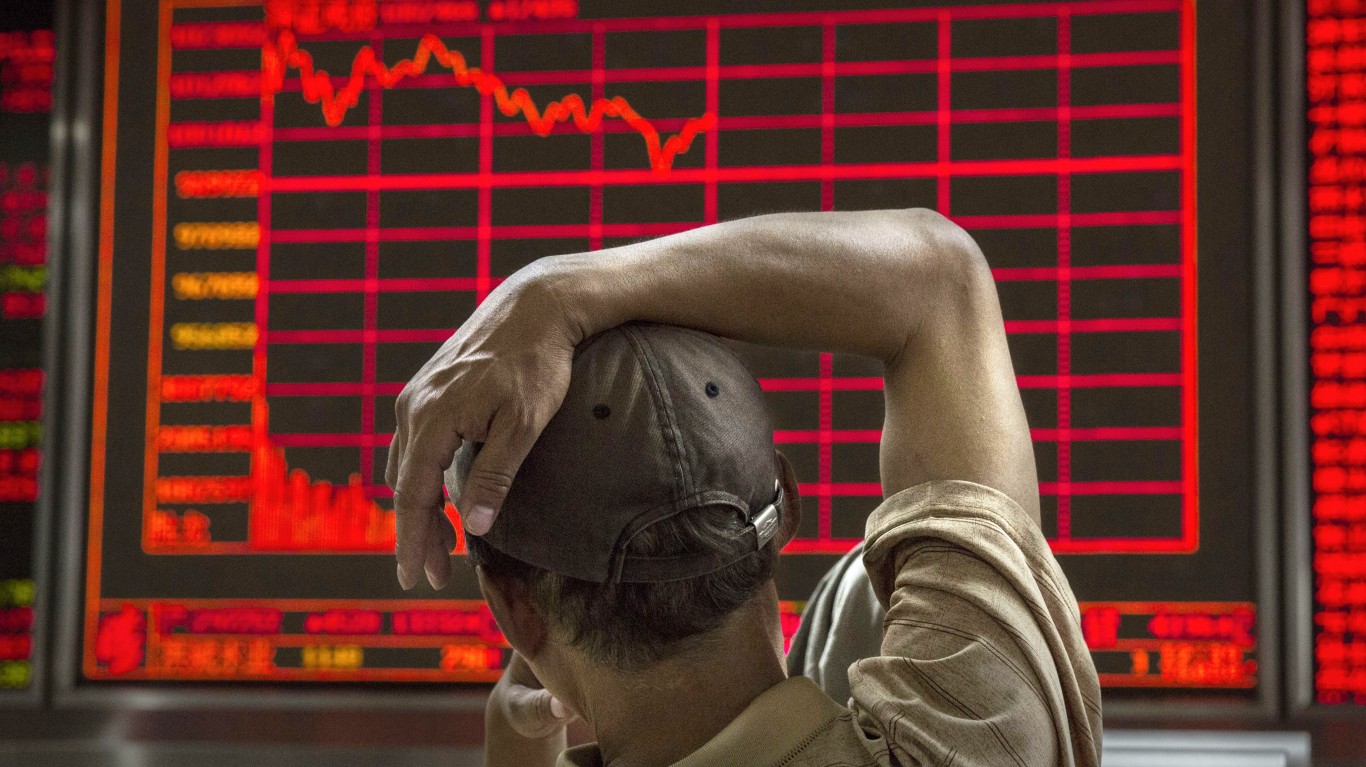
Premarket action on Friday had the three major U.S. indexes trading mixed. The Dow Jones industrials were down 0.32% and the S&P 500 down 0.18%, while the Nasdaq was 0.11% higher.
All 11 market sectors closed lower Thursday. Financials (−4.1%) and materials (−2.54%) fell the most. Utilities (−0.84%) and energy (−1.36%) posted the day’s smallest losses. The Dow closed down 1.66%, the S&P 500 down 1.85% and the Nasdaq Composite down 1.85%.
Two-year Treasuries dropped 15 basis points to 4.9% on Thursday, and 10-year notes fell by five basis points to close at 3.93%. In Friday’s premarket, two-year notes were trading at around 4.83%, and 10-year notes traded at about 3.85%.
Investors got spooked by an announcement late Wednesday that SVB Financial Group (NASDAQ: SIVB) sold “substantially all” of its available for sale (AFS) securities and initiated a $2.25 billion sale of common and mandatory convertible preferred shares with the idea of rebalancing the bank’s portfolio to take advantage of short-term rates, lock in funding costs and protect both interest income and margin. While a bank run was not exactly the cause or the outcome, the bank suffered enough withdrawals to put a scare into Wall Street traders. The bank’s stock dropped 60% Thursday and traded down an additional 43% Friday morning.
Silvergate Capital Corp. (NYSE: SI) dropped 42% on Thursday after announcing late Wednesday that it would liquidate. Other S&P 500 banks with double-digit share price declines were First Republic Bank (NYSE: FRC), down 156.5%; Signature Bank (NYSE: SBNY), down 12.2%; and Zions Bancorporation (NASDAQ: ZION), down 11.4%.
New claims for unemployment benefits got the market off on the wrong foot Thursday, coming in at 211,000, above the consensus estimate and above the revised total for the prior week. Continuing claims were revised lower, to 1.649 million, and the reported total for the week ending February 25 rose increased by 69,000 to 1.718 million.
The report on February’s nonfarm payrolls will be released before markets open Friday morning. Economists have forecast job growth of 205,000, much less than half the January growth rate of 517,000. Private payrolls, which totaled 443,000 new jobs in January, are forecast to have added 203,000 new jobs in February. The unemployment rate is expected to remain unchanged at 3.4%.
Thursday’s trading volume was above the five-day average. New York Stock Exchange losers outpaced winners by 2,680 to 431, while Nasdaq decliners led advancers by roughly 4 to 1.
Shares of General Electric Co. (NYSE: GE) closed up 5.27% on Thursday, the biggest winner among all S&P 500 stocks. The venerable industrial firm held its investor day on Thursday and everyone liked what they heard. Chairperson and CEO of GE Aerospace, Larry Culp, and Scott Strazik, CEO of GE Vernova, the former conglomerate’s energy business that will be spun out next year, offered an upbeat message with some numbers to back it up. Culp said that over the long term, GE Aerospace “will deliver mid- to high-single-digit organic revenue growth and continued margin expansion with free cash flow in line with net income.” As for GE Vernova, Culp said the company expects the business “to generate mid-single-digit organic revenue growth and high-single-digit profit margin with strong free cash flow conversion over the long term.”
Looking at companies that reported earnings after markets closed Thursday, DocuSign Inc. (NASDAQ: DOCU) beat estimates on both the top and bottom lines and gave upside guidance for the full 2024 fiscal year. But the stock traded down about 13% in Friday’s premarket because the company’s workforce cuts did not boost margins as much as Wall Street expected. That could be a problem going forward.
The Gap Inc. (NYSE: GPS) missed top-line and bottom-line estimates and issued downside guidance for the current quarter and the full 2024 fiscal year. Shares traded down more than 7% Friday morning.
Oracle Corp. (NYSE: ORCL) beat the consensus earnings estimate but missed on revenue. Earnings guidance was in line with the company’s earlier forecast. Shares traded down nearly 5% in Friday’s premarket.
Get Ready To Retire (Sponsored)
Start by taking a quick retirement quiz from SmartAsset that will match you with up to 3 financial advisors that serve your area and beyond in 5 minutes, or less.
Each advisor has been vetted by SmartAsset and is held to a fiduciary standard to act in your best interests.
Here’s how it works:
1. Answer SmartAsset advisor match quiz
2. Review your pre-screened matches at your leisure. Check out the advisors’ profiles.
3. Speak with advisors at no cost to you. Have an introductory call on the phone or introduction in person and choose whom to work with in the future
Thank you for reading! Have some feedback for us?
Contact the 24/7 Wall St. editorial team.

 24/7 Wall St.
24/7 Wall St.



